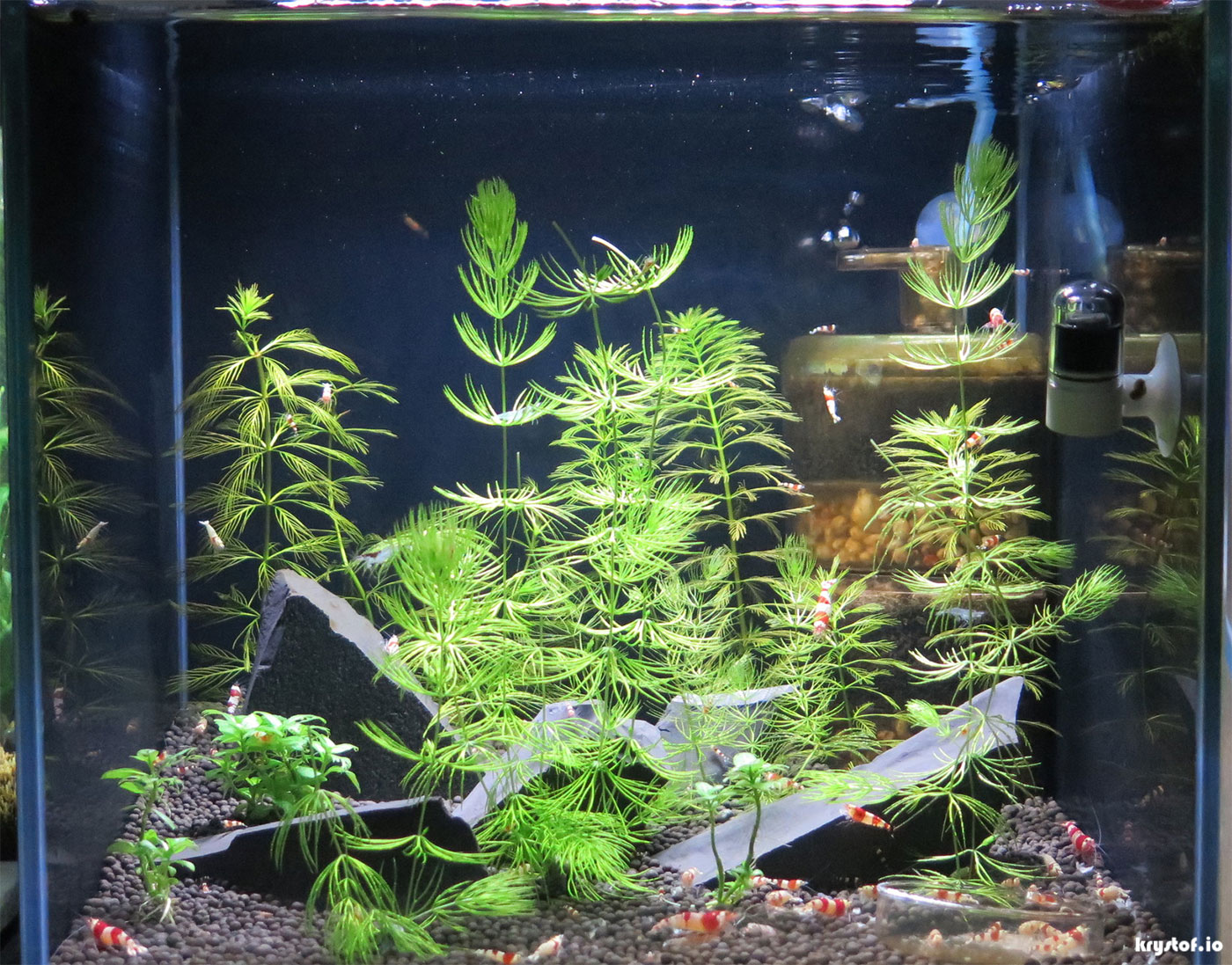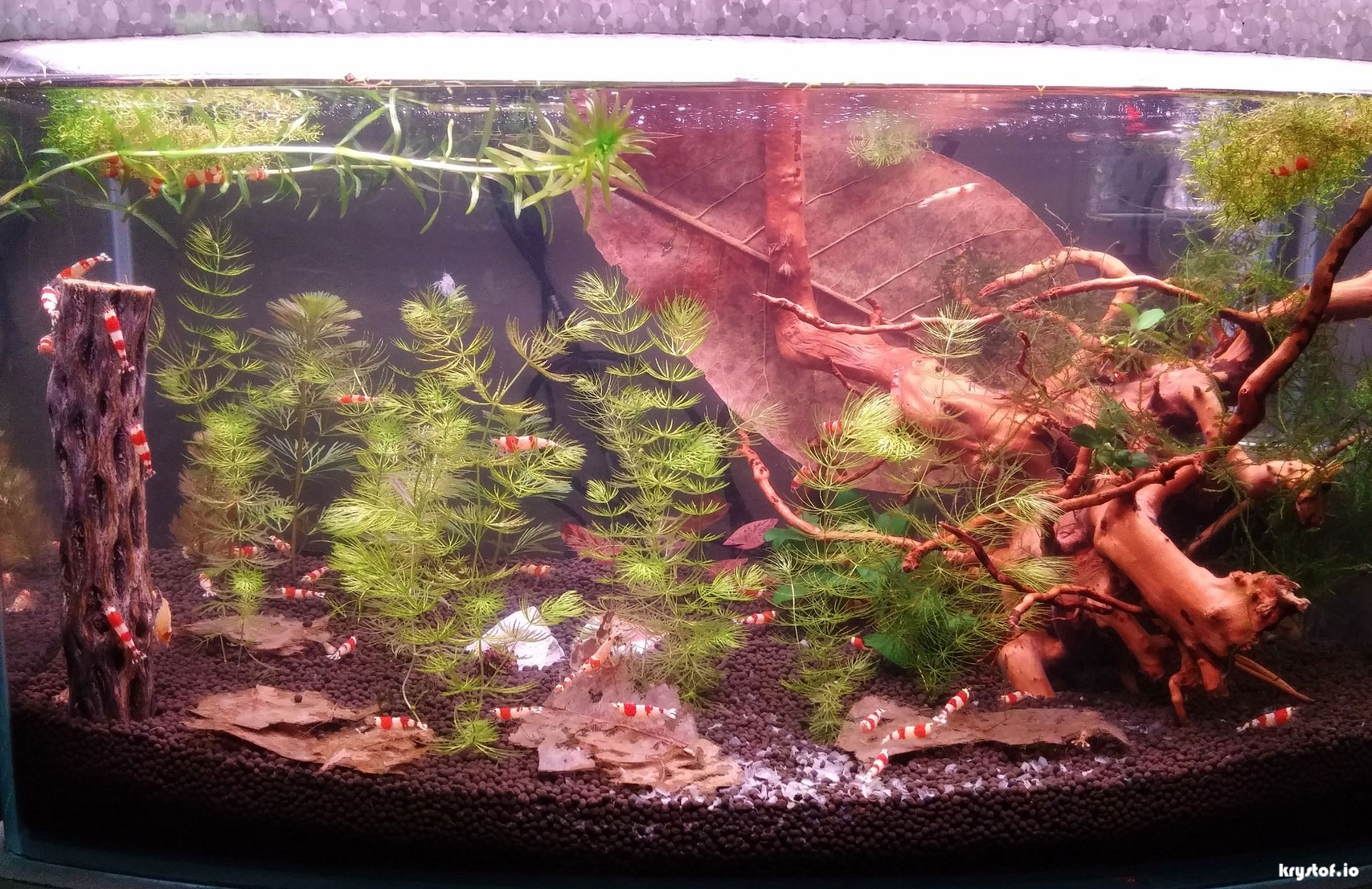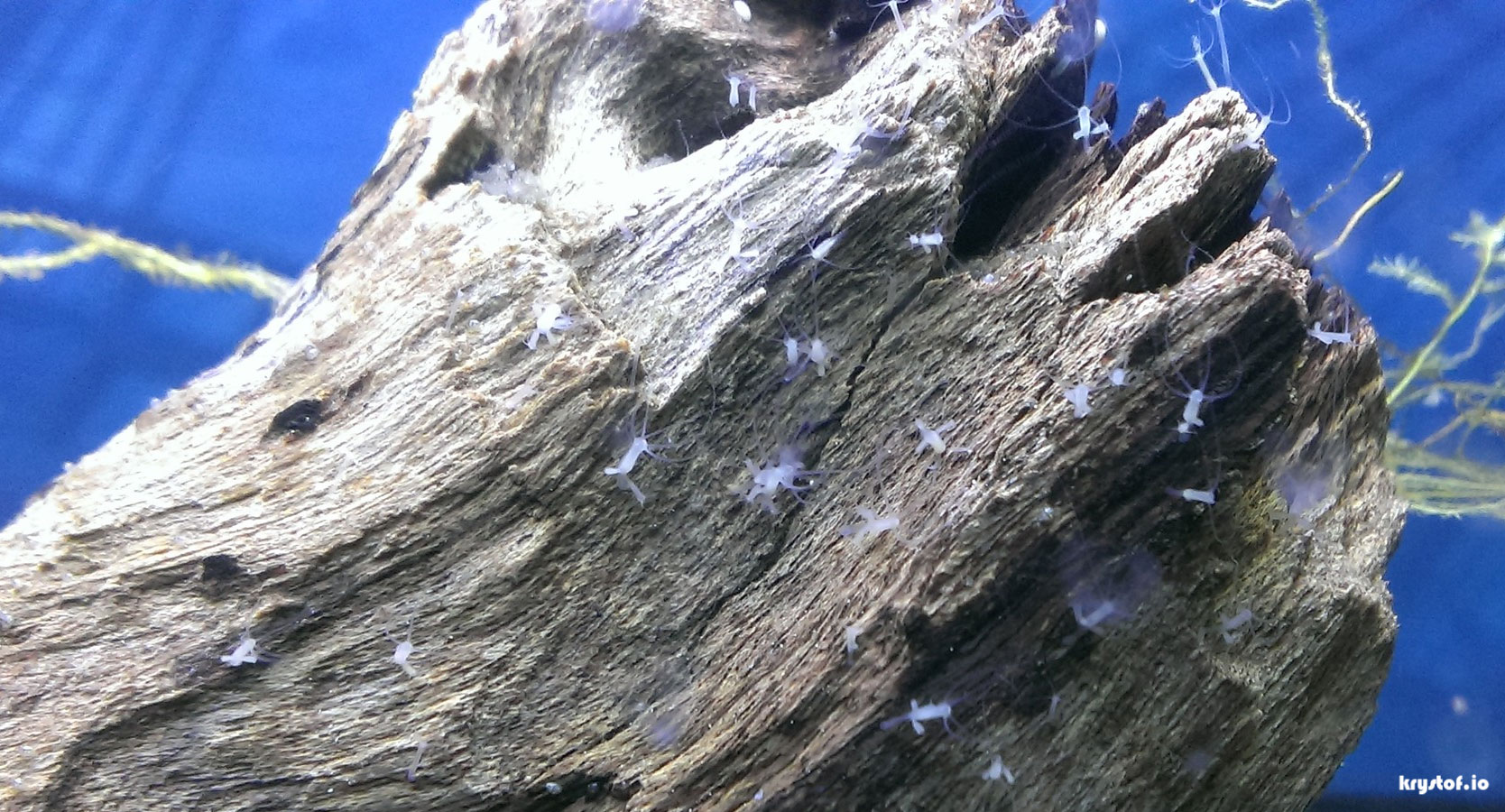Last Updated on January 17, 2020.
There used to be a small aquatics shop in Council Bluffs, Iowa called One Stop Aquatics. Tucked away in a half-vacant strip of storefronts, as soon as you open the door you were greeted warmly by Jerry. Jerry had rows of tanks along the walls, and rows of tanks filling the space between. You’d think there’d be a fish in there somewhere, and maybe a couple of tanks had some of the finned variety. The rest? Invertebrates. Many legged, molting, claw-laden invertebrates.
Shrimp are Jerry’s specialty. While the physical storefront may be gone for the time being, his online presence is still alive and quite well, and probably easier to maintain for him this way. I was lucky enough to see the store a couple of times before it closed down, and it was quite a treat viewing all of these different colored shrimps, crayfish and snails compared to a regular aquatics store. Typically, at least in Nebraska, other places don’t have more than 5 to 10 percent of their tanks dedicated to shrimp – if at all.
While he has a lot of different varieties, I opted for the striking and classic Caridina cantonensis sp. “Red”. They’re ‘Bee Shrimp’, and in this case CRS to be more specific with the color. I bought around ten or so of them, and while the standard Caridina sticker shock compared to the more common Neo-caridina (your common red cherry shrimp) may take you back at first, it just means that you should know you’re ready to take on the challenge of maintaining a tank with these candy cane critters.
Here’s my experience with these little aqua-dudes and how I set up my tanks to see how well they’d fare, after hearing about the extremely picky water parameters and care required.
The soil of a man’s heart is stonier, Louis
These shrimp can co-exist in a freshwater tank along with regular shrimp and fish, but they’re more likely to survive there, but not necessarilly thrive there. I’ve put these shrimp in all my tanks and they live just fine. I don’t see a lot of breeding, however, and I think that’s where the water parameters tend to come in play. To assist with that, a substrate specialized in lowering and buffering pH worked well for me as I was using just good ol’ hard Nebraska tap water treated with Seachem Prime.
ADA soil, a.k.a. Aqua Design Amano, is the heavyweight and the gold standard. I’ve never used this soil, primarily because of the ammonia it leaches out into your tank. That’s okay as long as you know and prepare, I’m just a tad impatient. I already had bio-media to cycle the tank with, I didn’t want to combat ammonia spikes from soil. Nevertheless, if you have the time and patience, I’ve seen shops using it and it looks amazing.
I opted for UP Aqua Shrimp Sand on the first real Crystal tank setup. It lowered the pH a bit, and I had no ammonia swings. My pH was running in the high sixes, and gradually came back into the low sevens:

That’s obviously more than 10 shrimp I purchased. I had some babies… a lot of babies.
My second tank, which I’ve just transported the shrimp into, is using Aquavitro’s Aquasolum black humate. I noticed a similar pH drop, and we’ll see in the future if it swings back up, as the tank is only a month into usage.

Neither the Aquasolum or the UP Aqua soil had any noticeable Ammonia leaching, thankfully. Shrimp are sensitive, and Crystals even more so. If you have any ammonia or nitrite, and more than a little nitrate, we won’t be discussing surviving vs thriving, just outright dying.
If anything, you want your water in the soft acidic to neutral range, and substrate can help you there. Substrate affects on pH change over time, I personally like to swap out half or all of the substrate after a year or so, that’s just me.
Both of these tanks are 5-7 gallon setups. Nothing extreme, and nothing but shrimp. These beautiful Mr. Aqua tanks and substrate were purchased from Nebraska Aquatic Supply
Reading your tea leaves
To further assist in keeping pH lower as well as keeping your Crystals happy, I like to regularly place Indian Almond Leaves and fresh pieces of spider wood in the tanks to assist the substrate in keeping the water closer towards acidic than my straight hard tap water. They pick at the leaves over time until they’re skeletal structures of days past, so swap them out for new ones as the shrimp get done with them. The wood also releases tannins, lowering the pH naturally.
That was the whole goal of my Crystal shrimp tanks – I didn’t want to go over the top with setup and maintenance. If they didn’t get along with this substrate, some leaves, and wood, then I wasn’t about to do much more for them, and if they didn’t thrive, but were still happily eating and puttering around as they do, I’d be just fine.
To assist in molting and keeping the colors vibrant, I also like to place Tantora White Mineral Stones (Montmorillonite) in the tanks. Add some easy to grow plants, like the hornwort, java moss, and anubias you see up top, and the shrimp should get along quite well. They love the cholla wood on the left side as well. Keep your tank natural. If it’s only Petco colored gravel and SpongeBob SquarePants ornaments, your shrimp may survive, but they probably won’t thrive
Hail, Hydra?
One thing to note on starting up a shrimp only tank, let alone a Crystal tank. Overfeeding won’t kill you, but it will kill your shrimp. The last thing you want is left over food rotting in your tank, creating unhealthy water parameters and, if you’re really unlucky, lead towards one of the most unwelcome guests in your shrimp tank:

These little bastards are freshwater jellyfish relatives that will love nothing more than to take over your tank if you let them through overfeeding. The picture above is a tank that I took fish out of and left the wood in for a few weeks. Out of sight, out of mind, as there was nothing fish or shrimp related in the tank. Looked in the tank one day and that’s what I saw.
Don’t underestimate them, they’re not large but they are most definitely a threat.
Please sir, may we have some more?
So what do you feed your shrimp? An established tank with wood, plants, and leaves provides a lot of food already, as the shrimp peck away at the decaying bits and biofilm provided.
They still love good old fashioned food though, and I’ve given a half sinking wafer to them now and then, or even some flake food for my other fish. They eat it all. Stick your hand in a shrimp tank (preferably recently washed – no soap or perfumes), they’ll gladly pick away whatever they can find in the ways of dead skin.
Feeding them ‘regular’ food works, but may only help them survive. If you want them to thrive, use food targeted towards invertebrates, and never put anything, liquid or solid, in your tank if it contains copper. That’s a shrimp killer. I use Seachem Flourish in all but my shrimp tanks for that reason, just to be on the safe side. My shrimp tanks are shrimp tanks first, planted tanks second. I don’t CO2 inject nor over-fertilize my shrimp tanks.
Jerry, the shrimp man himself, has some great soybean based food called ‘Snowflake (From Shrimp Boutique)‘. It can be left in the tank, which is great if you’re going on vacation, and it won’t pollute the water. My shrimp love this stuff.
EDITOR’S NOTE: The link above seems to be no more. Search Amazon for Snowflake and you may find a similar product.
The other shrimp specific food I occasionally throw in is Shirakura Crystal Red Shrimp Food I found on Amazon. It’s another frenzy food when I throw it in, but I do chop mine up into smaller pieces as it has no preservatives and will foul water if left in too long, so make sure they eat up the small chunks, or you remove what you put in when they’ve had their fill and begin to ignore it.
In fact, here’s a video of what throwing in a chunk of Shirakura. Within seconds they detect it and swarm to the general vicinity… Once found, it’s ‘game on’.
The Jackrabbits of the tank
My regular cherry red shrimp, the more accessible freshwater dwarf shrimp, breed like there is no tomorrow. I have fed more spare cherry shrimp to angel fish, given them away to friends, and sold them at local fish swaps than any other shrimp.
Crystals, on the other hand, haven’t been quite as easy for me. All the shrimp you see here come from the first 10 I purchased. I had one set of babies in the first tank, and then no new babies after that over the eight months. I went from thriving to surviving. Which I was still happy with, as I’m not trying to breed superior grade shrimp. They look cool to me and I’m happy with them. If I was really wanting to breed shrimp for sale, I’d be spending a lot more time watching water parameters attempting to get the perfect setup, and I’d be culling the weaker colored shrimp.
That’s not the point of this article and not the point of my shrimp keeping. I want some babies to put in other tanks and give to friends, possibly a few swap sales, but nothing more and over time, as I’m not culling, my shrimp won’t be as good as you’d get from someone like Jerry. He knows his stuff, and he’s the guy for breeding for sale.
So what gives? My shrimp were fine, I wasn’t having a mass die-off, they were still hungry for food, no hydra zapping anything… What caused my shrimp to go from thriving to surviving?
For me, it’s a matter of speculation. I had some stones in that first tank, and not much in the way of wood. The substrate was older. My pH was in the mid to upper 7 range. Was it the pH? The hardness of my water is already well out of bounds for optimum breeding, but that’s the same it was when I had my first batch of babies…
My aquatic friend Mitch took about 15-20 shrimp home with him and is currently trying to see if the Crystals he got from me will breed. The experiment was to see if his meticulous environment setup was going to get them to breed again while my setup left alone would show a survive vs thrive outcome. He uses a bit of a different setup, primarily RODI water, so we’ll see how it works out for him over time.
Word is that he’s got berried CRS now, while mine were still just puttering along. After a while, I decided to swap out the shrimp to their second tank (pictured above). That means new substrate, less rocks, more wood. After three weeks of that, I now have two berried CRS.
Was that the cause alone? Hard to say. I’d like to think so. A small shift in the tank accompaniment along with a substrate swap (it was about a year), and it looks like we’re both back in baby business.
What’s the deal?
I read that crystals are some of the more difficult shrimp to keep. I haven’t found that, myself. I would say though, that I do see a difference when it comes to procreation. I would also argue that they are difficult to keep if you’re targeting the most optimum breeding parameters, culling specific shrimp, separating generations, etc. Much more so than standard cherry shrimp.
Nevertheless, I think the refreshing of the tank helped get them back in the groove, because the Barry White music sure as hell didn’t do the trick. I also don’t go crazy with the water changes, at this time I’m doing about 30 % every two weeks, in an effort to keep things relatively stable than a weekly 50% water change I might do on a heavily fertilized planted tank.
Say Hi to Jerry for me. His hornwort, leaves, and crystal reds are doing great here, nibbling on his Snowflake food.
